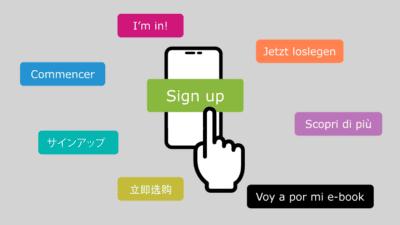Creating SEO texts with ChatGPT: where the AI tool excels – and falls flat
Lightning-fast, endlessly scalable and almost free of charge: AI tools such as ChatGPT seem to promise deliverance to overworked SEO copywriters everywhere. Time for a reality check – through the medium of an online sunglasses store.
Does Google penalize AI-generated content with bad SEO rankings? Can the search engine even recognize who or what created the text? And what role is left for humans in the midst of all this AI?
An urgent “Act now!” or a restrained “Find out more”? It all depends on your target market.
Stricter regulations and growing reporting requirements mean that modern corporate reports include ever more text. Defining core messages and communicating them to stakeholders is therefore an increasing challenge for companies. But there’s a trick you can use to get to the heart of even the longest report: the kitchen message.
AI writing tools have a lot of uses. They can generate ideas, deliver variations on a theme or save you from churning out repetitive product texts. But what you get out is only as good as what you put in. So it’s high time to boost your prompting skills.
Judging by the media coverage of ChatGPT and its friends, copywriters and translators are facing certain extinction. But is all the hype justified? And what do large language models (LLM) really mean for our beloved professions?
The latest generation of artificial intelligence from OpenAI has been taking the internet by storm for the last few weeks, and we’re among its fans. ChatGPT seems to be able to do almost anything, from developing apps to writing Bible verses about how to remove a sandwich stuck in your VCR. But is it really as good as it seems? We tested when the tool really creates value for everyday (writing) tasks… and when it just creates problems.
Instapage makes building landing pages a piece of cake – and Supertext’s translations are the cherry on top.
There is a wide range of e-learning solutions on offer, from multimedia content production tools to platforms for interactive training sessions. But how can you choose the right software for your needs? And which tools are best at handling multilingual content? We took a closer look at eight well-known solutions.
E-commerce is just like any shopping experience. If the customer can’t connect with it, even the best product in the world won’t sell. User experience is decisive – and a localized one is sure to bring customers back again and again. Let’s take a look at why it pays off to localize your online store.
The opportunities that arise from online courses that are available in different languages are endless. As are the ways we can tackle the task at hand. It’s best to start by setting your expectations. These questions will get you straight to the point.
If you want to learn something properly, you need to go in-depth. Doing that is easiest in your native language – which is why it makes sense to translate the content of online courses. Today, we’ll share a few more reasons and explain why it’s about more than just writing in the right language.
If you look at the 50 largest listed Swiss companies, it becomes clear that language diversity is decreasing. Half publish their annual reports in German and English, the other half only in English. Are translations no longer worthwhile? Or to put it another way, the costs are a drawback – but what are the perks?
“Content is king” is one of the most popular phrases in marketing – and has been for many years. The recent boom in digital content has been vast. But has it been a good thing? We look at what the research says, and why sometimes less is more.
Only a few brands out there have a voice that’s memorable enough to stick in your head. And yet, the language of a brand can have just as fundamental an impact on its image as its logo or corporate design. Apple, Harley-Davidson and others are prime examples of how companies can use their brand voice to make a lasting impression.
From blogposts to email campaigns and websites to ad posters, it’s clear that successful marketing requires text. A lot of text. And people to write it. But did you know that there are (at least) two types of professional involved: content writers and copywriters? We’ll demonstrate the differences and explain how to identify the crème de la crème of each profession.
The options are plentiful – and so are the opportunities. A distinctive tone of voice is one of the most powerful tools for building a brand identity. It’s something that the biggest and most successful brands are adept at leveraging – and so can you. What tone do you want your brand to strike? Supertext can help you find it.
What is your position on gender-neutral language? Do you want your communication to be casual or formal? What tone do you generally want to strike? Many questions arise in connection with a company’s communications, especially when they’re multilingual. With a linguistic style guide, you can establish the rules you want to adhere to. We show you why it’s worthwhile creating one and which points a style guide should include as a minimum.
Anyone who wants to take their website global is faced with the question of how to ensure they can be found by the relevant search engines in foreign markets. Word-for-word translations just don’t cut it. Read on to find out what you need to take into account.
It’s a profession that’s growing on an almost daily basis – and for good reason: localization managers help ensure seamless multilingual communication at every level. We give you an insight into what they do and help you decide whether you need one, too.




















Topics: Guide | Comment